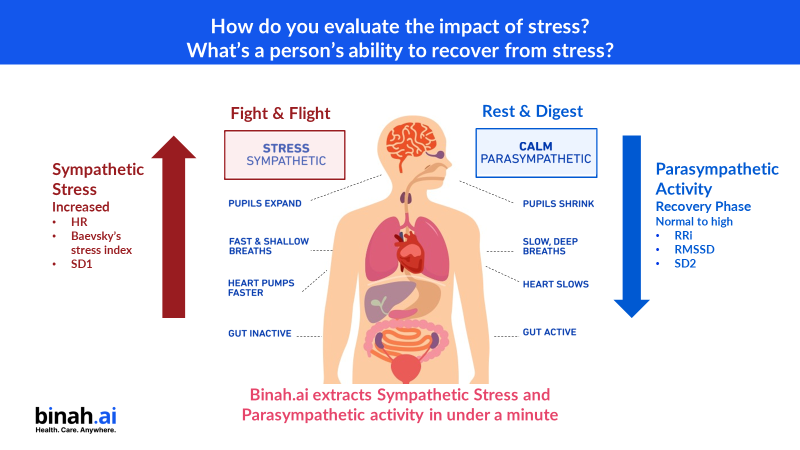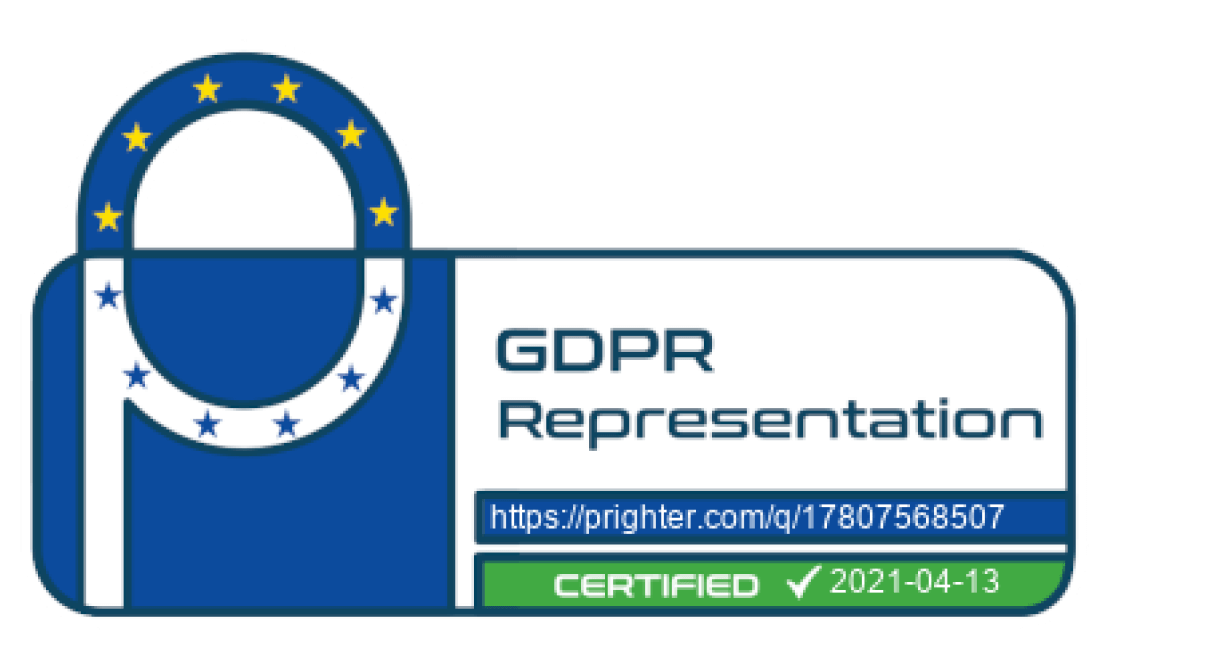Stress Tracking to Support a Better Understanding and Treatment of Stress
How to properly measure stress: The science behind the symptoms
Stress occurs when the body’s balance is threatened. This can happen as a reaction to a physical, emotional or psychological stimulus (stressor). Stress is regulated by the autonomic nervous system (ANS). Acute stress response can help the body cope with dangerous situations and return to a balanced state. However, if the stress is continuous and chronic, it can lead to serious health issues.
But how can you tell if you are under long-term stress? One option is to use stress tracking technology. Innovative technology that allows objective mental stress measurement using just a smartphone camera can enable stress measurement capabilities to now be in everybody’s pocket. Let’s look behind the scientific scenes of this solution.
Why is stress more of a problem than ever?
71% of adults report at least one symptom of stress, such as low mood, headaches, body pain and a lack of productivity. Stress can cause a direct impact on mental health, wellbeing – and even lead to or exacerbate cardiovascular diseases and metabolic diseases. Of course stress isn’t the only cause of illness, but stress is a known risk factor for an increase in cardiovascular events and even death.
Over the past few years, the COVID-19 pandemic has caused a lot of added stress in people’s lives. The inability to get good sleep, worry over loved ones, and symptoms of PTSD are now common issues for individuals.
Understanding that stress is all around us and we’re living in very demanding times, stakeholders need to do something about this epidemic. The cost of treating patients who have mental health issues is 2 to 3 times higher than those without this kind of co-occurring illness. Employees who are at high risk of depression have the highest health care costs, for as much as 3 years after an initial healthcare assessment.
How do we perform stress tracking in the body?
It starts from the autonomic nervous system (ANS), which has two arms. On the one hand, the parasympathetic arm activates when you gather yourself and calm down. It causes your breaths to become slower and deeper, your pupils to get smaller, your heart to slow down and your gut to become more active. On the other hand, the sympathetic arm activates when you become more stressed and triggers the opposite response. Your gut becomes inactive, your breaths get faster and increasingly shallow, your pupils dilate, and your heart begins to pump faster. This is a survival mechanism in your body. Unfortunately, some people are continually in a state of fight or flight, as regular stressors act upon their bodies as if they are in a dangerous situation.

In a normal condition, the ANS is balanced well and you don’t have any indicators of stress. When you have acute stress, your heart rate and blood pressure rises, but you can control this by responding to the situation, whether that’s something positive (new house or excitement!) or negative (argument or illness). If this feeling continues however for hours each day, we end up with an unbalanced ANS, and chronic stress. Symptoms of this are far more severe as adrenaline and cortisol are being produced in large amounts for too much time. This can cause heart disease, diabetes, high blood pressure, dyspepsia, and more.
So, how can we measure stress?
Usually, the activity of the ANS is measured in a few different ways. You might measure the stress hormone in the blood, sending it to a lab and waiting for the results, or use an ECG to measure heart rate, heart rate variability or other vital signs. This would need to be done in person, in a clinic of some kind.
Today, science and technology for stress tracking have moved on. In under a minute, Binah.ai’s technology allows you to use a simple selfie video from any camera-equipped device to measure the activity of the parasympathetic and sympathetic arms, both of which are needed to understand stress levels. At Binah.ai, we measure the heart rate variability at intervals to get both of these numbers. We then compare this against a normal range, to ascertain whether stress levels are high, or the ANS is balanced. When we see high sympathetic activity, that means we can say that the body is now in a state of stress.When the body is in the recovery phase, parasympathetic activity will typically range from normal to high.
Of course, a spot check is not enough. We always recommend you start to understand your circadian rhythms to learn the best time to check, and to be able to measure in different conditions and regularly, to understand whether the stress reaction is normal or not, especially in relation to your age.
What can we do with stress data once we have completed stress tracking techniques?
By regularly tracking this information, there are a number of ways in which healthcare providers and payers, wellness programs and employers can make a difference:
- Allow people to be aware they are under long-term stress. This is something many people ignore or misunderstand.
- Inform people of its many damaging effects and let them know they need to take measures to tackle it.
- Provide information, support and guidance, according to the person’s own contextual situation.
Medical stakeholders can detect stress as an early indicator of other conditions. Wellness providers can optimize fitness programs to alleviate stress and combat likely side effects. Individuals can implement stress reduction methods such as breathing techniques or mindfulness, and then monitor the impact of those behaviors on stress levels. For employers, you can implement workplace wellness programs and improve employee health and wellbeing, at the same time as reducing healthcare costs.
This article was based on a recent webinar with our Chief Medical Officer, Dr Naveh Tov and our CEO, David Maman. For a more in-depth explanation, please watch the webinar here.

 close
close




